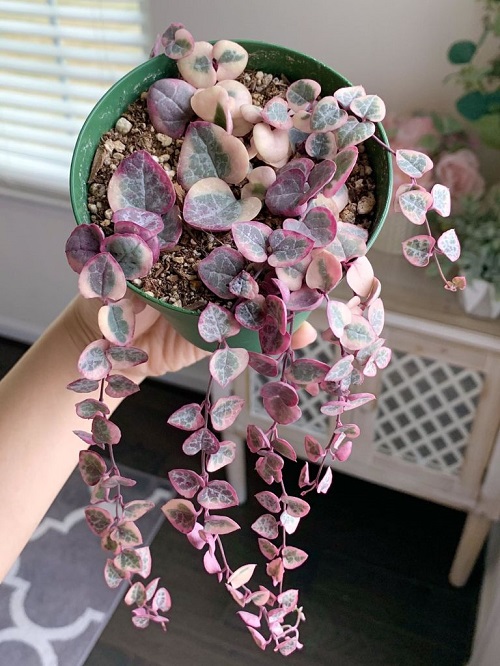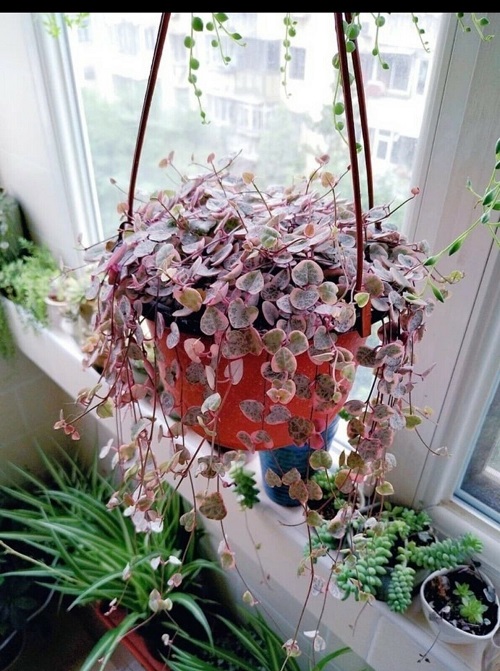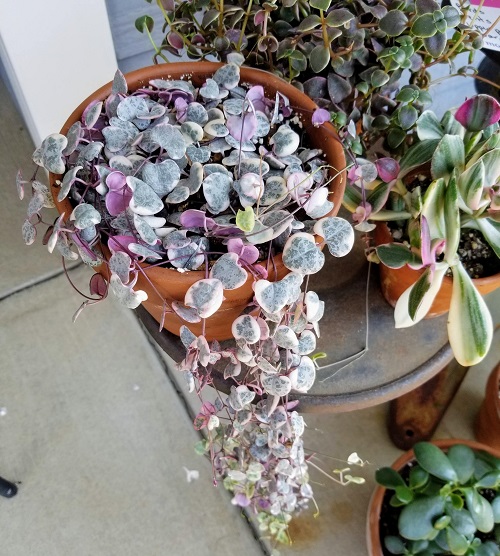String of Hearts is a perfect house plant for beginner gardeners and stands out with its vivid color combination! Here’s how to grow it.
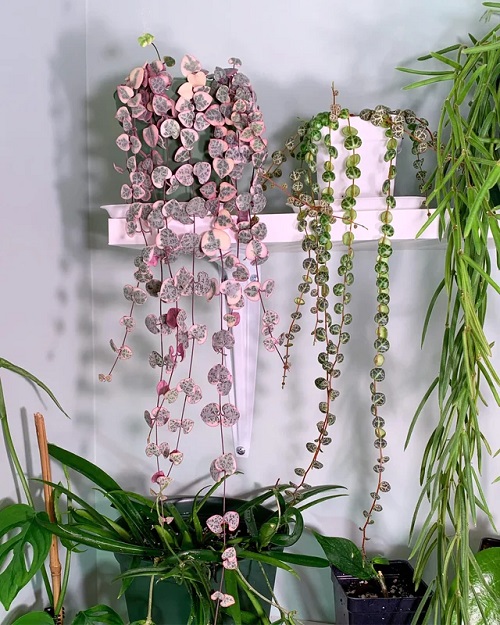
The String of Hearts is a popular houseplant that is prized for its charming heart-shaped leaves and its ability to thrive in low-light conditions. Proper care and attention will ensure that this plant thrives and brings joy for years to come.
Botanical Name: Ceropegia woodii
Family: Apocynaceae
USDA Zones: 9-12
Common names: Rosary Vine, Hearts Entangled, Chain of Hearts
Learn String of Turtles Plant Care and Growing Information here
String of Hearts Plant Profile
The String of Hearts plant is a delicate and trailing succulent that has long, slender stems that can grow up to several feet in length. Its leaves are heart-shaped, small, and succulent with a soft, velvety texture. The plant produces small, tubular flowers that are pale pink or purple and have a delightful scent.
It is an evergreen perennial that thrives in warm and humid conditions. It can grow up to 3-4 feet in length if given proper care and attention. The String of Hearts plant is perfect for hanging baskets or trailing over a shelf.
Have a look at the Best String Succulents that Hang here
Best Pot Size for String of Hearts
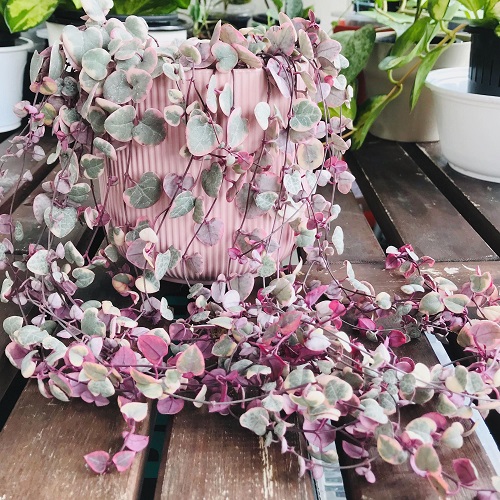
As String of Hearts is a slow grower, it is best to start with a small pot and move up to a larger one as the plant grows. A 4-6 inches pot is ideal to start the plant. Depending on the growth and spread, you can re-pot it into one size bigger container.
Here are Plant Pot Sizes from Inches to Gallon
String of Hearts Propagation

The String of Hearts plant is easy to propagate through stem cuttings.
- Locate a healthy stem on String of Hearts with several sets of leaves. Choose a stem that is not too young or too old.
- Use a sharp, sterilized pair of scissors or shears to cut the stem about 3-4 inches below the set of leaves.
- Remove the leaves from the bottom 1-2 inches of the stem, leaving a few sets of leaves at the top.
- Dip the cut end of the stem in rooting hormone powder.
- Plant the stem in a well-draining soil mix and water it thoroughly.
- Place the String of Hearts cutting in a bright, indirect light and keep the soil slightly moist.
- After a few weeks, roots should start to develop, and new growth will appear.
Check out our article on best-trailing houseplants here
Requirements for Growing String of Hearts Plant
Light
The String of Hearts plant requires bright, indirect light to grow. It can tolerate some direct sunlight but prefers bright, filtered light. Too much direct sunlight can scorch the leaves.
For best colors, expose it to direct mild morning sunlight for 2-3 hours daily.
Here are the Best Outdoor Indirect Sunlight Plants for Containers & Shade Gardens
Soil
The plant requires well-draining soil that is sandy and slightly acidic. A mix of potting soil, sand, and perlite can be used to create a well-draining soil mix.
Find out some Helpful Hacks to Improve Your Garden Soil for Free here
Temperature
The ideal temperature for the String of Hearts plant is between 60-80°F (15-27°C). Temperatures below 50°F (10°C) can harm the plant, so it should be kept in a warm location.
Humidity
The string of Hearts prefers higher humidity levels, between 50-70%. It can tolerate lower humidity levels, but the leaves may become dry and brittle. Keep its pot on a pebble tray filled with water for best results.
Here are Ways To Increase Humidity For Houseplants That Work
String of Hearts Plant Care
Fertilizer
It is best to use a balanced, all-purpose fertilizer, such as a 10-10-10, every two to four weeks during the growing season (spring and summer). In the fall and winter, fertilizing monthly is usually sufficient.
Be sure to dilute the fertilizer to half the recommended rate before application.
Want to Make Organic Fertilizers from Kitchen Scraps? Click here
Pruning
The best time to prune String of Hearts plants is in late winter or early spring. It involves removing dead or dying leaves and cutting back any long stems to promote new growth.
When pruning, make sure to use sharp, sterilized pruning shears to prevent any damage. Start at the base of the plant and work your way up, snipping off any leaves that appear wilted or discolored.
Once you have removed the dead or dying foliage, you can then trim back any long stems, making sure to leave at least two or three leaves on each stem.
Pests
The String of Hearts can be susceptible to mealybugs, spider mites, and scale insects. To treat pest infestations, use a gentle insecticidal soap or neem oil spray.
Regularly inspect the plant for any signs of pests and isolate any affected plants.
Click here to learn the Amazing Natural Pesticide Recipe that can Kill any Pest
Diseases
The plant is generally healthy but can develop root rot if overwatered or if the soil is not well-draining. Remove the affected parts of the plant to stop the infection from spreading.
Avoid overwatering and ensure the soil is well-draining to prevent future issues.

